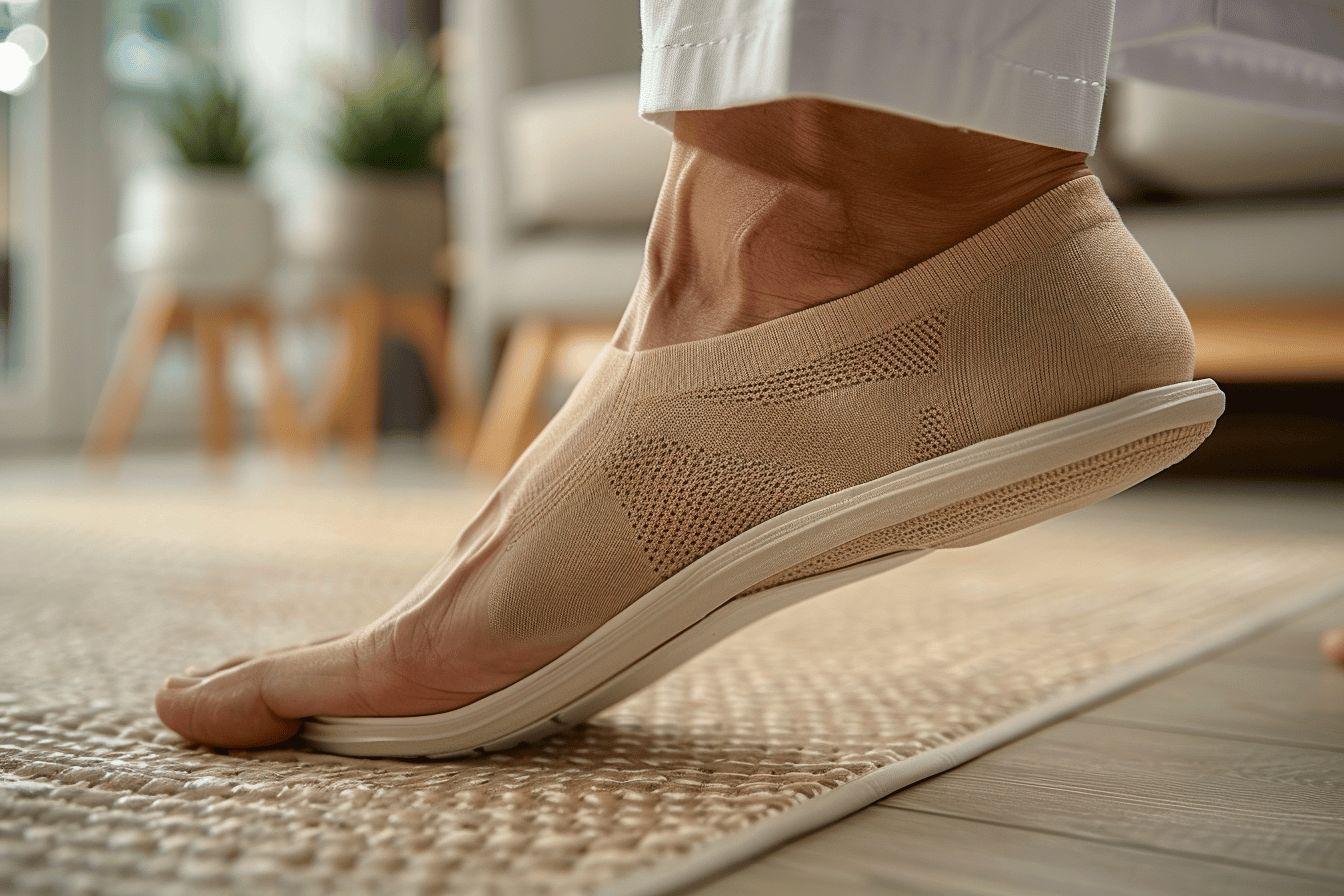Hallux valgus, a deformity of the big toe, can be prevented or slowed by understanding its causes and risk factors.
- Multifactorial origins: genetics, unsuitable footwear, age, trauma
- Impact on quality of life: pain, walking difficulties
- Essential prevention: choosing suitable footwear, strengthening exercises, weight control
- A comprehensive approach is necessary: regular podiatric care, healthy lifestyle habits
Hallux valgus, commonly A bunion, also known as a "bunion," is a foot deformity that affects many people. This condition can cause significant pain and affect quality of life. Understanding its origins and associated risk factors is essential to prevent its onset or slow its progression. Let's explore together the reasons why people develop hallux valgus and how to prevent it.
What is hallux valgus and how does it develop?
Hallux valgus is a progressive deformity of the big toe joint. This condition is characterized by a deviation of the first metatarsal toward the inside of the foot, while the big toe moves outward. Over time, a bony protrusion appears on the inner side of the foot, forming what is commonly called a "bunion."
The development of hallux valgus is often a slow process that takes place over several years. It results from a combination of biomechanical and environmental factors. The initial deformity may be mild and painless, but it tends to worsen over time, leading to complications such as inflammation, joint stiffness, and walking difficulties.
It is important to note that hallux valgus is not the only foot deformity that can cause discomfort. For example, claw toes are another common problem that can sometimes coexist with hallux valgus.

Risk Factors and Main Causes of Hallux Valgus
Several factors contribute to the onset and worsening of hallux valgus. Understanding them allows for better targeting of preventive measures. Here are the main factors to consider:
- Genetic predisposition: Some people inherit a foot structure that makes them more likely to develop bunions.
- Wearing improper footwear: Pointed-toe shoes or high-heeled shoes can promote foot deformity.
- Age and gender: Women and the elderly are more frequently affected.
- Trauma or injury: Repeated impacts or a poorly healing fracture can initiate the process.
- Inflammatory conditions: Certain diseases such as rheumatoid arthritis increase the risk.
The morphology of the foot also plays a crucial role. Flat feet, or conversely, high arches, can increase stress on the big toe joint. Furthermore, professional or sporting activities that place intense strain on the feet can accelerate the onset of hallux valgus in predisposed individuals.
It should be noted that other podiatric problems can develop alongside or as a consequence of hallux valgus. For example, heel spurs can occur due to a change in weight distribution on the foot.
Impact of Lifestyle Habits on the Development of Hallux Valgus
Our daily choices significantly influence the health of our feet. A modern, often sedentary lifestyle can weaken the foot muscles and promote the development of deformities such as hallux valgus. Here's how our habits can impact the development of this condition:
| Habit | Impact on hallux valgus |
|---|---|
| Excessive sedentary lifestyle | Weakening of the foot muscles |
| Prolonged wearing of unsuitable shoes | Compression and deformity of the foot |
| Excess weight | Increased pressure on the forefoot |
| Neglect of podiatric care | Late detection of emerging problems |
The importance The importance of regular, appropriate physical activity should not be underestimated. Targeted exercises to strengthen the foot muscles and improve flexibility can significantly reduce the risk of developing bunions. Similarly, careful attention to a healthy lifestyle, including a balanced diet and maintaining a healthy weight, helps preserve the integrity of the foot's structures.
It's also crucial to consider the impact of our work environment. Jobs requiring prolonged standing or the wearing of rigid safety shoes can accelerate the onset of podiatric problems. In these cases, specific preventive measures should be considered, such as the use of suitable insoles or the adoption of ergonomic working postures. Strategies for preventing and managing hallux valgus Preventing the onset of hallux valgus or slowing its progression requires a multifaceted approach. Here are some effective strategies to implement:
- Choosing shoes wisely: Opt for models with a wide toe box and moderate heel.
- Strengthening exercises: Regularly perform specific exercises for the feet and toes.
- Maintaining a healthy weight: Reduce pressure on your feet by controlling your weight.
- Preventive podiatrist consultation: Have your feet examined regularly by a professional.
- Using orthotics: Custom-made insoles can correct biomechanical imbalances.
Implementing a daily foot care routine is essential. This includes gentle massages, the use of ice in case of inflammation, and the application of moisturizers to maintain skin suppleness. Also, adopting relaxation and foot stretching techniques after a busy day can relieve accumulated tension and prevent existing deformities from worsening.
It's important to emphasize that preventing hallux valgus is part of a broader podiatric health approach. Consequently, foot care to prevent this deformity can also prevent other problems such as plantar fasciitis or metatarsalgia. A holistic approach to foot health effectively contributes to improving overall quality of life and maintaining optimal mobility in the long term.





Leave a comment
This site is protected by hCaptcha and the hCaptcha Privacy Policy and Terms of Service apply.